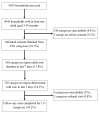Adherence to zinc supplementation guidelines for the treatment of diarrhea among children under-five in Uttar Pradesh, India
- PMID: 26649175
- PMCID: PMC4652923
- DOI: 10.7189/jogh.05.020410
Adherence to zinc supplementation guidelines for the treatment of diarrhea among children under-five in Uttar Pradesh, India
Abstract
Background: There is limited evidence on adherence to the recommended dose and duration of zinc supplementation for diarrheal episodes in children under five years of age. In selected districts of Uttar Pradesh, India, we sought to assess adherence to the nationally advised zinc treatment regimen (ie, 10 mg/day for ages 2-6 months and 20 mg/day for ages 7-59 months for 14 days) among caregivers of zinc-prescribed children.
Methods: We identified and conducted follow-up visits to children advised zinc for the treatment of diarrhea. At the initial visit, we collected data on the treatment instructions received from providers. Caregivers were asked to record treatments administered on a pictorial tracking form and were asked to retain all packaging for collection at follow-up. We quantified the average dose and duration of zinc therapy and built logistic regression models to assess the factors associated with caregiver adherence to national guidelines.
Results: Caregivers administered zinc for an average of 10.7 days (standard deviation (SD) = 3.9 days; median = 13 days), and 47.8% continued treatment for the complete 14 days. Among children receiving zinc syrups and tablets respectively, the age appropriate dose was received by 30.8% and 67.3%. Adherence to age appropriate dose and continuation of zinc for 14 days were highly associated with having received appropriate provider instructions.
Conclusions: Our results indicate moderate-to-good adherence to national zinc treatment guidelines for diarrhea among caregivers in rural India. Our findings also highlight the importance of provider guidance in ensuring adherence to zinc dose and duration. Programs aiming to scale-up zinc treatment for childhood diarrhea should train providers to successfully communicate dosing instructions to caregivers, while also addressing the tendency of caregivers to terminate treatment once a child appears to have recovered from an acute diarrheal episode.
Similar articles
-
An external evaluation of the Diarrhea Alleviation through Zinc and ORS Treatment (DAZT) program in Gujarat and Uttar Pradesh, India.J Glob Health. 2015 Dec;5(2):020409. doi: 10.7189/jogh.05.020409. J Glob Health. 2015. PMID: 26682045 Free PMC article.
-
Appropriate Management of Acute Diarrhea in Children Among Public and Private Providers in Gujarat, India: A Cross-Sectional Survey.Glob Health Sci Pract. 2015 May 7;3(2):230-41. doi: 10.9745/GHSP-D-14-00209. Glob Health Sci Pract. 2015. PMID: 26085020 Free PMC article.
-
Substantial reduction in severe diarrheal morbidity by daily zinc supplementation in young north Indian children.Pediatrics. 2002 Jun;109(6):e86. doi: 10.1542/peds.109.6.e86. Pediatrics. 2002. PMID: 12042580 Clinical Trial.
-
Zinc supplementation in public health.Ann Nutr Metab. 2013;62 Suppl 1:31-42. doi: 10.1159/000348263. Epub 2013 May 3. Ann Nutr Metab. 2013. PMID: 23689111 Review.
-
Micronutrients and diarrheal disease.Clin Infect Dis. 2007 Jul 15;45 Suppl 1:S73-7. doi: 10.1086/518152. Clin Infect Dis. 2007. PMID: 17582575 Review.
Cited by
-
Identifying risk factors for vomiting during diarrhea: A secondary analysis of a randomized trial of zinc supplementation.J Pediatr Gastroenterol Nutr. 2025 Apr;80(4):598-610. doi: 10.1002/jpn3.12441. Epub 2025 Jan 13. J Pediatr Gastroenterol Nutr. 2025. PMID: 39806793 Clinical Trial.
-
Nutritional Profiles and Zinc Supplementation among Children with Diarrhea in Bangladesh.Am J Trop Med Hyg. 2023 Feb 27;108(4):837-843. doi: 10.4269/ajtmh.22-0532. Print 2023 Apr 5. Am J Trop Med Hyg. 2023. PMID: 36848897 Free PMC article.
-
m-Follow up for zinc adherence by caretakers of children with acute watery diarrhoea: A randomized controlled trial.PLOS Digit Health. 2023 Oct 3;2(10):e0000348. doi: 10.1371/journal.pdig.0000348. eCollection 2023 Oct. PLOS Digit Health. 2023. PMID: 37788258 Free PMC article.
-
Acute Diarrhoeal Disease in Children Aged 6 Months to 24 Months: An In-Hospital Cross-Sectional Study.J Family Med Prim Care. 2021 Jul;10(7):2494-2498. doi: 10.4103/jfmpc.jfmpc_1443_20. Epub 2021 Jul 30. J Family Med Prim Care. 2021. PMID: 34568125 Free PMC article.
-
Impact of co-packaging oral rehydration salts and zinc on diarrhoea treatment dispensing behaviour in selected rural health facilities in Zambia.PLOS Glob Public Health. 2025 Mar 26;5(3):e0004342. doi: 10.1371/journal.pgph.0004342. eCollection 2025. PLOS Glob Public Health. 2025. PMID: 40138656 Free PMC article.
References
-
- Fischer–Walker C, Lamberti L, Roth D, Black R. Zinc and infectious diseases. In: Rink L, editor. Zinc in Human Health. Amsterdam: IOS Press, 2011. p. 234–53.
-
- Lazzerini M, Ronfani L. Oral zinc for treating diarrhoea in children. Cochrane Database Syst Rev. 2008;(3):CD005436. - PubMed
-
- WHO/UNICEF. Joint Statement: Clinical Management of Acute Diarrhoea. Geneva: WHO/UNICEF, 2004.
-
- WHO/UNICEF. Ending Preventable Child Deaths from Pneumonia and Diarrhoea by 2025: The Integrated Global Action Plan for Pneumonia and Diarrhoea (GAPPD). Geneva: WHO/UNICEF, 2013. - PubMed
Publication types
MeSH terms
Substances
LinkOut - more resources
Full Text Sources
Other Literature Sources
Medical

